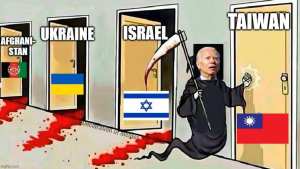. . . Ukraine’s punch through Russian defenses in the first foreign invasion since World War II exposed Russia’s military flaws and laid bare Moscow’s apparently illusory red lines.
Now some are again questioning the centerpiece of Washington’s Ukraine strategy: a slow, calibrated supply of weapons to Ukraine to avoid escalating tensions with Russia that critics argue has dashed Kyiv’s chances of driving Russia out and resulted in a grinding war of attrition with massive casualties.
Ukraine’s Kursk incursion “proved the Russians are bluffing,” said Oleksandr Danylyuk, a former Ukrainian intelligence and defense official, now an associate fellow with the Royal United Services Institute, a think tank in London. “It shuts down all of the voices of the pseudo experts … the anti-escalation guys.”
Read entire article here:

Recent Comments